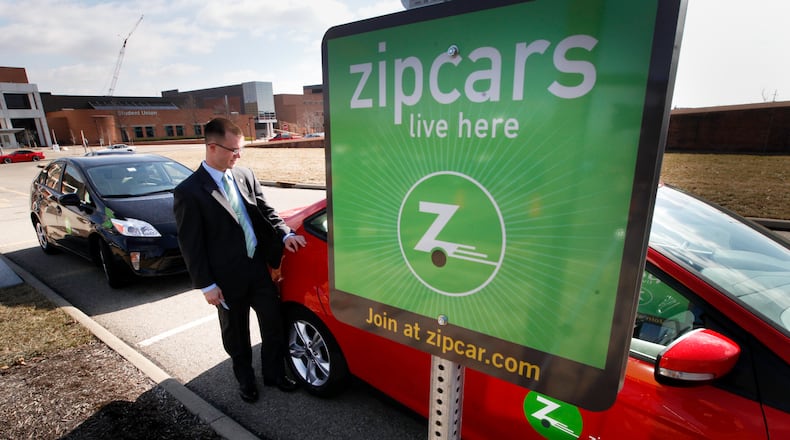I live in a senior living residence, and although I am still able to drive, have a driver’s license; and am in good health, I am living on a fixed income. The cost of a monthly lease payment, insurance and gasoline was a big expenditure.
Do you have any advice or suggestions for those of us who are in similar situations and want to be able to do our own shopping and errands? -- Tony
RAY: You and your fellow seniors are perfect candidates for short-term, “on-demand” car rental services, Tony.
Zipcar is the oldest and best known of the bunch, but Car2Go is starting to show up in more cities now. Here’s how they work. The cars are parked in dedicated, reserved parking spaces in busy areas. If you don’t already have a Zipcar where you live, ask your senior center administrator to offer Zipcar or Car2Go a dedicated space and see if they’ll base a car there. They often do that for apartment buildings and places where the cars will get used a lot.
Then, when you want a car, you just go online and sign up. You can reserve the car for an hour, three hours or a full day. And if you’re just using it for shopping or errands, it’s about $10 an hour, including gas and insurance. That’s certainly less than leasing a car that sits idle for 23 and a half hour a day. In fact, maybe you can offer to take a couple of neighbors shopping and charge them $6 each and come out ahead, Tony?
Once you’ve signed up, there’s no paperwork each time you take the car. You wave your phone over a receiver on the car’s dashboard, and you drive off. When you’re done, you park the car in the dedicated space until the next time you need it. And in the meantime, your friends and neighbors can be using it.
If you can’t get one of the on-demand companies to base a car there, you can look at peer-to-peer car rental services, like GetAround or Turo. It works like Zipcar but with greater danger of dog odor. Perhaps there’s a peer-to-peer car housed close enough to where you live that it would be convenient.
A third option is a ride hailing service, like Lyft. That’s similar to a taxi, but you use an app on your phone to both summon a car and pay for the ride. They’re so ubiquitous now that you can have one drop you off at the supermarket and order another one to take you home when you’re in the checkout line. No need to have the cabbie wait for you while the meter runs.
There’s a trend now where lots of younger people simply don’t want to own cars anymore. Too expensive. Too inconvenient. Too much pollution. And these services have cropped up to serve those people. So you’re a trendsetter, Tony. Congratulations.
Flickering dash lights may be an easy fix, no Zippo required
Dear Car Talk:
I have a 2011 Ford Crown Victoria retired police car. The dashboard lights and gauges do not work most of the time. Occasionally they will come on briefly when I hit a bump in the road and then go dead again. I think it is a problem with the wiring. However, my mechanic says it is the circuit board behind the dashboard. What do you think is the cause of the problem? Thank you. -- Christee
RAY: I think your mechanic is right, Christee.
There’s a printed circuit board on the back of the instrument cluster. That’s a thin sheet of plastic onto which the “wires” are, essentially, printed. And after getting bounced around and flexed for 100,000 or 150,000 miles, it’s not unusual for one or more of those little “wires” to crack, taking your instrument cluster down with it.
The broken “wire” is still there, with the two pieces almost touching one another. That’s why, occasionally, when you bounce the thing just right, they reconnect for a moment and then go out again.
So what do you do so that you can see your instruments again at night? Well, you can buy a Zippo lighter. Or, if you’re really cheap, a box of matches. But fixing it will require either repairing the existing circuit board or replacing it.
Having yours repaired is certainly the least expensive option. It’ll probably cost you around $150 to send it away and have someone re-solder it. The problem is that you’ll be without an instrument cluster -- which means without a car -- while you’re waiting for it.
Some places will send you a refurbished one from another car and then give you a credit if you send your broken one back to them -- which they can fix and sell to somebody else. That’s a pretty good solution, because you won’t have to wait.
Start by talking to your mechanic. He may have done this job before and may have suppliers he trusts. Or, if not, maybe he can get you deal on some Zippos.
Got a question about cars? Write to Ray in care of King Features, 628 Virginia Drive, Orlando, FL 32803, or email by visiting the Car Talk website at www.cartalk.com.
About the Author

